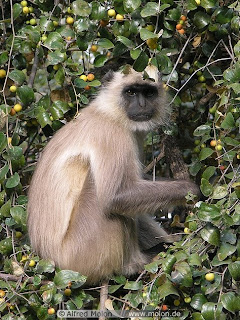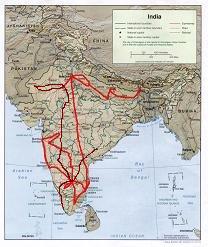Second, I am writing the editors of Lonely Planet and suggesting that they change their name to “Lonely Planet: an Utter Guide for Travelers Who Want to Look Utterly Stupid.” They misinformed me, and I, in turn, misinformed you. Pune is not pronounced Poona. That is how the imperialist dogs of England pronounced it. Lonely Planet, I truly hope that your little pronunciation error was an innocent mistake and not some lamentation of better times. Quit India, Lonely Planet. Pune is pronounced Pooney.
It was my sincerest intention to detail in this blost (blog+post=blost, please pronounce the “o” like you would in post, host and most and not like the “o” in lost and cost. Blost. Say it a few times. I could add a “w”, making it “blowst”, but that would seem dishonest…and stupid. I could also an “a”, making it “bloast”, but the pronunciation here would only be obvious if you preceded bloast with toast, coast or boast, and even then it’s not immediately obvious. Who writes a blost about toast? Making words, baby!) the food I’ve been eating, and each time I sat down to a meal, I had my camera ready. However, almost each time the food arrived, I would forget about my camera, about my blost, and begin eating vigorously the wonderful meals. About halfway through these meals, I would remember that I forgot and curse myself. Fortunately, the curses would not last long, as I would think, “Well, I’ll just have to get this again.” Then, I would happily resume eating. The food here has brought many smiles to my face. Keith, you must visit Pune if only to have one of its dark chocolate milk shakes. More on food later.
We made a couple of really great road trips during my second week in Pune. The first road trip included everyone was to Tamhini, a place about 65km outside of Pune. On the way to Tamhini, I was stunned by the countryside, as I have never seen countryside like that countryside surrounding Pune. In every direction, the huge hills/small mountains severely jut out of the wide river plains, and the segmented rock foundation causes these wonderful horizontal lines across the mountains’ green faces, which from above would resemble contour lines.
At Tamhini, we hiked about 1.5kms up a spring-fed creek to an 80ft waterfall. You could barely stand underneath the waterfall out of pain and fear that it would knock you out. My shoulders, head and back were seriously exfoliated. In fact, I think it damaged some of my hair follicles, as I seem a little balder.
The second road trip was with Pushkar to Sinhagad to visit the Lion Fort. Built on the highest point around Pune, the Lion Fort has amazing views in all directions and is about 25kms from Pune, so you barely see any trace of modernity. That is except for the two humungous communication towers they decided to put bang in the center of the Lion Fort. I am confused why this was permitted, but it did not really spoil the views, as the views were most impressive outward. Anyway, the fort had no castle-like structure in the middle, and I’m not sure whether there ever was one. Even without the castle, the fort was very impressive and seemed impenetrable, as there are cliffs on most sides, and the few places with entrances were well fortified. Pushkar informed me that the Lion Fort was once breached in 1670 when Shivaji defeated Bijapur, and I mention it now only because of the way Shivaji succeeded. Apparently, there are these huge lizards that live around Pune (think of a Kimono Dragon).
Like this, a Kimono Dragon
They are very good climbers and have incredible grips when they don’t want to move. Because the cliffs are too high to throw hooks over, Shivaji tied ropes around these lizards’ bodies and sent them up a cliff of the Fort. When they got to the top of the cliff and over the wall, he and his troops pulled on the ropes and the lizards clenched the ground. Thus, they climbed the ropes, penetrated the Fort and won the day. Shivaji is still a great hero in Maharashtra.
Work on the playground was delayed because of the monsoons. Much of the construction in Pune comes to a halt during the monsoons, and so the soil and other materials we needed to complete the playground were hard to get. It became obvious to me that I would be in Pune for at least another three weeks to complete the playground. Thus, I decided to leave Pune and continue my travels. Sauravh, Pooja and I had a good time designing it, and I’m excited to see the completed project.
With two great send-off meals, a hat and pair of slippers traditional in Maharashtra, I bid farewell to my friends in Pune and traveled northeast in Maharashtra to Aurangabad. Aurangabad is not much to speak of, but it is about 20kms to the Ellora Caves, one of ten World Heritage Sites in India. The Ellora Caves are a series of 34 caves built between the 6th and 11th Century. These caves are significant because each of the three major religions in India, Hinduism, Buddhism and Jainism, have caves here. The largest cave, Cave 16, is a Hindu cave, and is not really a cave but rather a large stone carving. Cave 16 is the largest monolithic structure in the world. At the base of the structure are these huge carved elephants that hold up the structure. Leah would love it.
I found the caves very peaceful, especially the caves away from Cave 16, as I was the only one visiting them. The caves also gave me good solar design ideas, as the stonecutters were masters at carving the stones so the large statues received sunlight for much of the day.


I took the back way on the 1km hike to the Jain caves. I was alone, and the path was infested with monkeys. The last monkey I passed tried to grab my ankle, and I bravely screamed.
Punk Monkey
After the public bus ride to and from Ellora (it cost me 36 rupees instead of 500 rupees by taxi), I know that the bus drivers get paid per person they terrify. A couple of old tenants were challenged on the bus ride:
-Buses are made to be on four wheels. WRONG. Two wheels are acceptable around even the slightest of turns and encouraged on turns with one or more adjacent cliff(s).
-Senior citizens should remain seated at all times. WRONG. Senior citizens should be thrown from their seats if they are not strong enough or alert enough to hold on to the nearest bar or head of hair.
The following morning I caught the 6.5 hour, 6am bus to Mumbai. As it is monsoon season, the rains are heavy now. I am impressed with Mumbai, but will describe it another time. I had a wonderful evening last night with Neelackshi, Shorub and their daughter Mahika. Neelackshi is a school friend of Mo. We may all do Karaoke tonight. After being in Mumbai for 3 days, I travel to Goa, and then to Bangalore.
But, alas, the rains have stopped, and my blosting and wordsmithing must come to an end for today.
P.S. I did a quick Google for “blost,” and the Urban Dictionary defines “blost” as the state of being lost after smoking a blunt (Steve chuckles). So, my blost will have to be a new entry in the Urban Dictionary with a new pronunciation guide.
P.P.S. These photos are not mine, as I've lost my battery charger, but the next will have my pics.


















